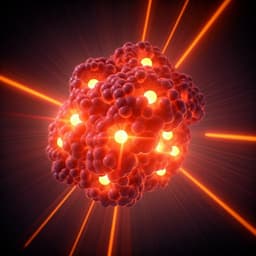
Agriculture
Optimizing spectral quality with quantum dots to enhance crop yield in controlled environments
C. H. P. Ii, D. Hebert, et al.
This groundbreaking research conducted by Charles H. Parrish II, Damon Hebert, Aaron Jackson, Karthik Ramasamy, Hunter McDaniel, Gene A. Giacomelli, and Matthew R. Bergren explores innovative luminescent films that enhance plant growth in bioregenerative life-support systems for off-Earth settlements. By modifying solar spectrum quality, the study reveals impressive increases in biomass for red romaine lettuce, suggesting significant implications for greenhouse productivity both on Earth and in space.
~3 min • Beginner • English
Related Publications
Explore these studies to deepen your understanding of the subject.







